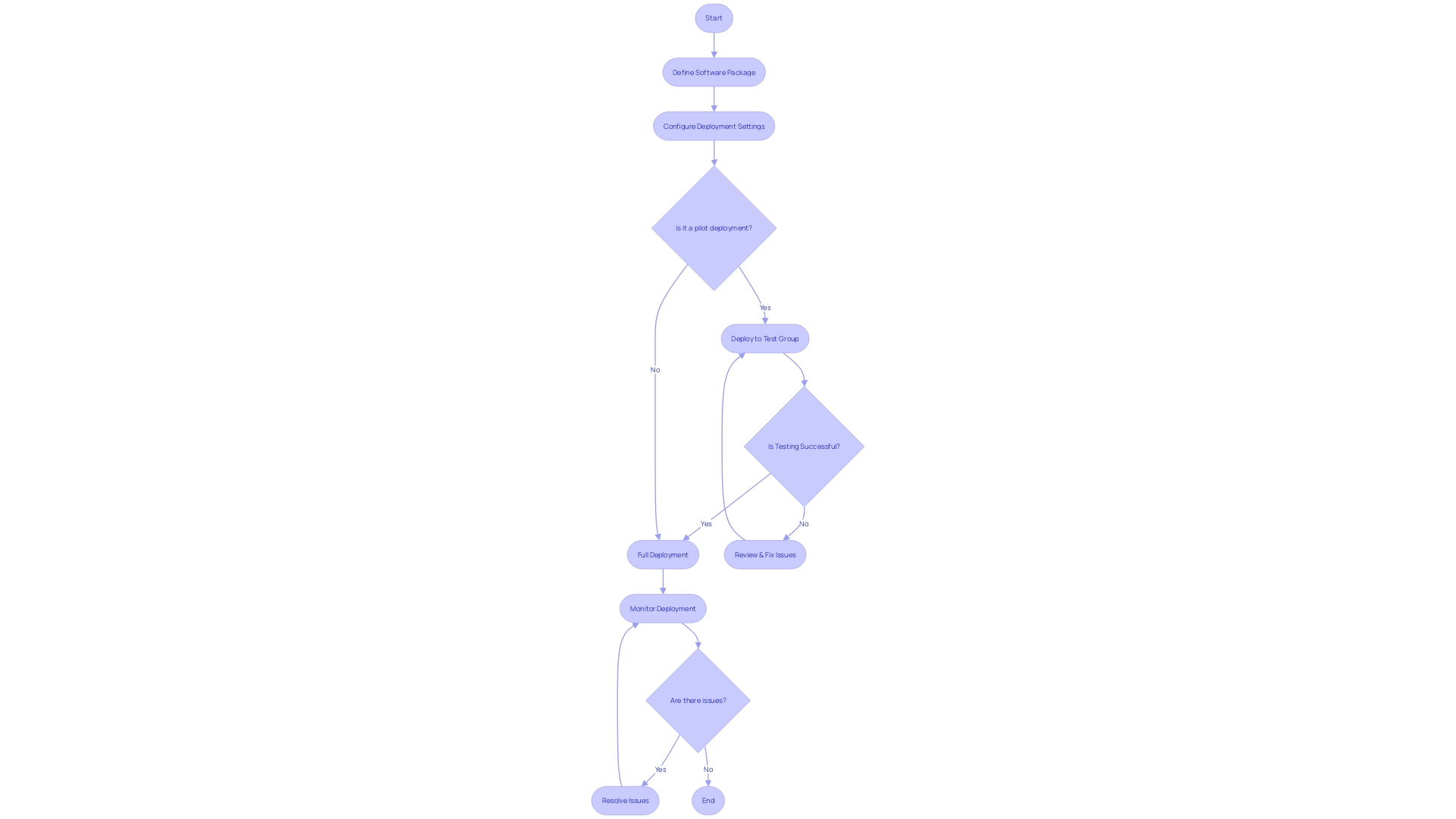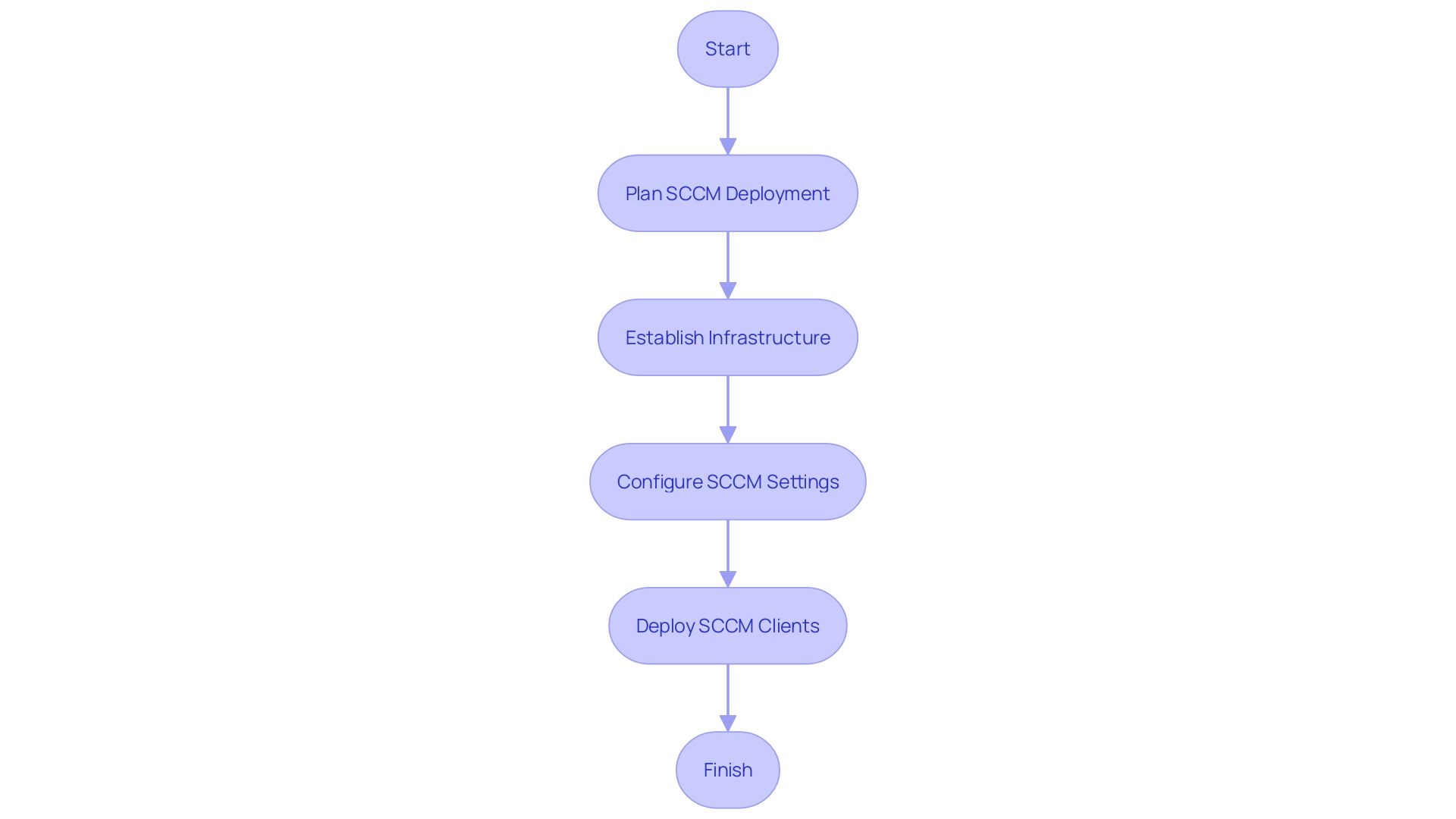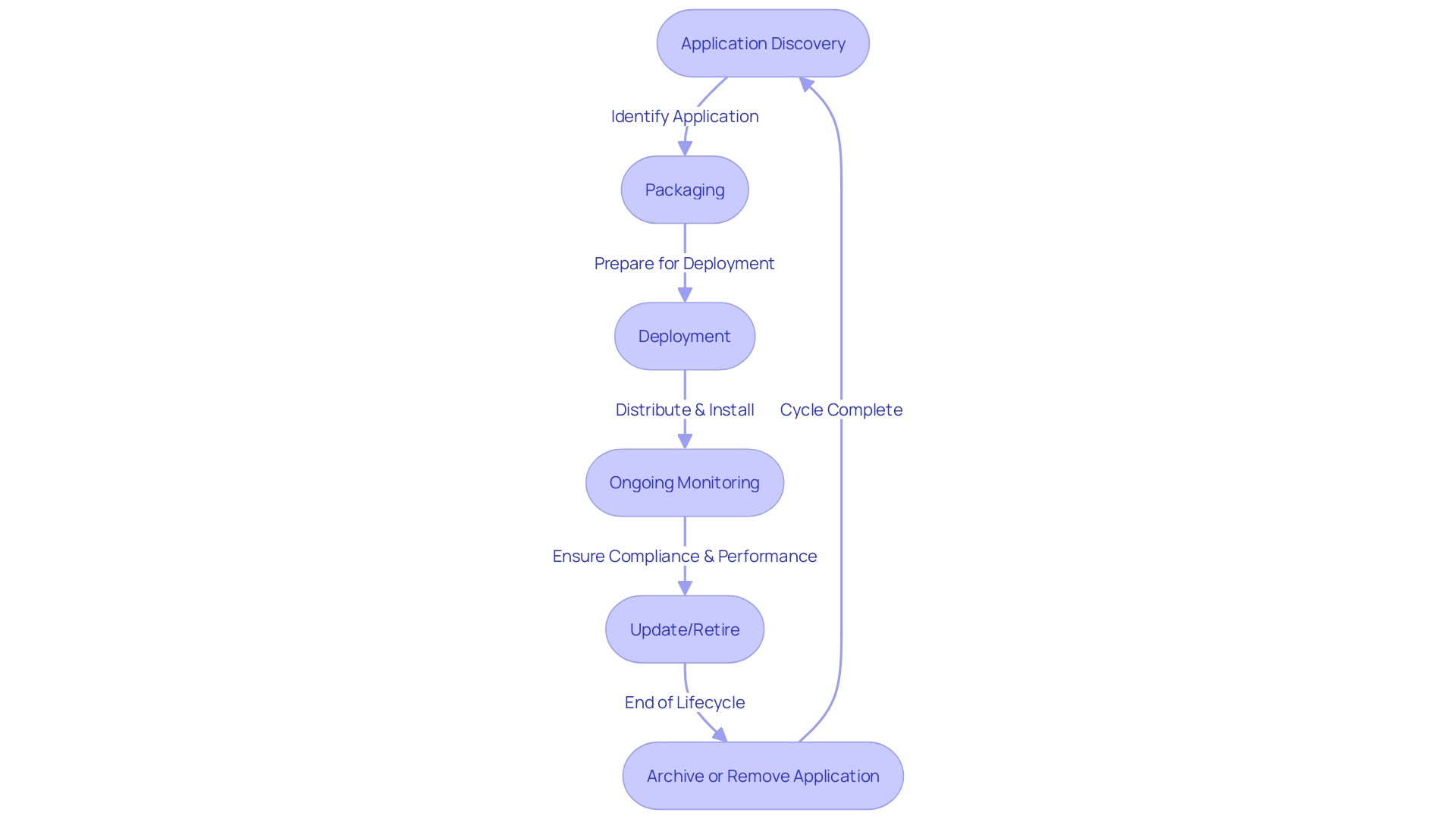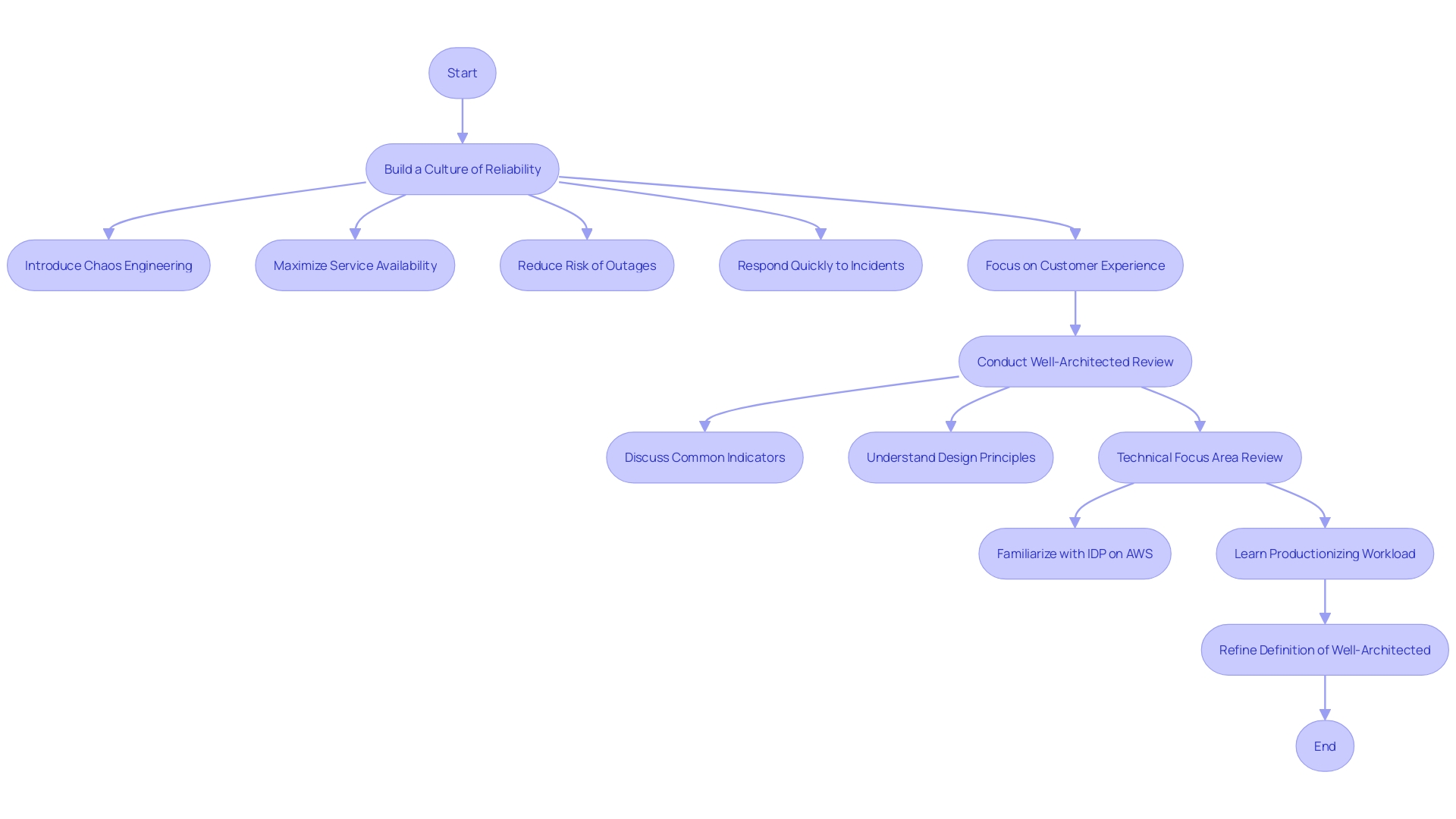Introduction
System Center Configuration Manager (SCCM) is a powerful tool that offers a comprehensive suite of features for efficient and secure IT management. From software distribution and deployment to patch management and inventory tracking, SCCM provides the necessary tools to streamline configuration management processes and support the goals of advanced technological organizations. In this article, we will explore the key features of SCCM, delve into its architecture and components, discuss best practices for its installation and configuration, highlight its modules and tools, and provide troubleshooting tips for common issues.
By understanding and harnessing the capabilities of SCCM, organizations can enhance their configuration management strategies and ensure consistency, integrity, and security in their IT infrastructure.
Key Features of SCCM
System Center Configuration Manager (SCCM) provides a wide range of capabilities intended to enable efficient and secure IT administration. An essential tool for configuration, it offers methods for software distribution and deployment, allowing administrators to precisely distribute software packages across different devices and user groups. It allows for granular control over deployment settings, ensuring that the right applications reach the intended recipients.
The centralized solution provided by the software is excellent for deploying updates and patches. This functionality is crucial for maintaining software compliance and keeping systems safeguarded against vulnerabilities, which is especially important in industries like banking where security and regulatory compliance are paramount, as seen with institutions like M&T Bank that prioritize maintaining high software quality standards.
Furthermore, the inventory management capabilities of this system are vital for tracking and managing hardware and software assets. Using its comprehensive inventory capabilities, organizations can track license compliance and generate detailed reports, offering a clear overview of IT resources.
Remote control features are another cornerstone of the system, allowing IT professionals to provide remote support and perform maintenance tasks without the need for physical presence, a valuable asset for continuous delivery of services and improving time-to-market for digital products as aimed by TBC Bank.
Lastly, the system assists in maintaining security and compliance standards, providing tools for vulnerability assessments and compliance reporting. This aligns with the insights shared at the Microsoft Fabric Community Conference, emphasizing the importance of connecting data sources and analytics services on a unified platform to manage and act on data effectively.
To summarize, the powerful capabilities of SCCM play a vital role in simplifying the processes of organizing, ensuring the consistency and integrity of software products, and supporting the objectives of advanced technological organizations.

SCCM Architecture and Components
Understanding the complexities of the architecture is crucial for efficient management of your IT infrastructure. At its heart, SCCM employs a client-server model, and delving into its core components can enhance your operational efficiency:
- Site Server: This pivotal component is the command center for SCCM, hosting the essential database, directing client-server communications, and orchestrating configuration changes. The Site Database is the storage for all operations, this SQL Server database holds configuration settings, inventory details, and client records, and is accessed by the site server and other components.
- Management Point: Serving as the liaison between clients and the site server, this component manages client directives, policy distribution, and resource accessibility.
- Distribution Point: This component is the storage hub for applications, updates, and other content, tasked with the crucial role of delivering this content to clients.
- Software Update Point: Integral to maintaining system integrity, this component synchronizes with Microsoft Update, downloads necessary updates, and circulates them to distribution points.
- Client Agents: Installed on managed devices, these agents are the foot soldiers of the system, executing tasks like inventory collection, software deployment, and compliance checks.
Comprehending the synergy between these components can result in a more efficient navigation of the system, similar to how the Savannah-Chatham County Public School System utilized technology to effectively manage resources and safeguard data, despite their limitations. Similarly, as showcased at the Microsoft Fabric Community Conference, the integration of different data sources and analytics services into a single platform epitomizes the potential of a well-architected system.
Setting Up SCCM: Installation and Configuration
To effectively set up System Center Configuration Manager (SCCM) within your infrastructure, a thoughtful approach to installation and configuration is crucial. Begin with a comprehensive planning stage, where the distinct needs of your organization are taken into account, the infrastructure is established, and the hierarchical structure is thoughtfully designed. Once this is established, make sure your environment meets the requirements of the necessary hardware, software, and network settings.
The setup procedure is the following important stage, where you will configure the site server, site database, management point, distribution point, and other necessary components with the assistance of the installation wizard. This step is akin to laying the foundation of a building—integral for the structure's stability and functionality.
After installation, delve into the configuration of the system, where detailed settings are determined for site boundaries, client configurations, software update policies, and security measures. This is where you customize the system to serve your organization's specific needs, much like customizing the rooms and functions of a newly built house.
Finally, deploying the client on managed devices is essential to facilitate communication with the infrastructure. This final step ensures that your organization can fully utilize the robust capabilities of SCCM for superior setup control, echoing the sentiments of Microsoft Teams' recent enhancements for optimized collaboration and workflow coordination.
Throughout this process, it's vital to acknowledge the complexity and potential risks involved. As noted by experts Duane Michael, Chris Thompson, and Garrett Foster, approach this setup as a guide, but at your own risk, and do not hesitate to seek assistance from knowledgeable communities such as the #sccm channel on bloodhound gang Slack for questions or contributions.

SCCM Modules and Tools
System Center Configuration Manager (SCCM) is a versatile platform that provides a range of modules and tools to enhance its core functionalities, making it an essential resource for any organization's configuration strategy. The Application Management module is a prime example, serving as a unified platform for the entire application lifecycle, from discovery and packaging to deployment and ongoing monitoring. This simplifies the administration of applications, ensuring they are efficiently rolled out and maintained across various departments.
Protection against cyber threats is made robust with SCCM's Endpoint Protection module, delivering a comprehensive security solution. It encompasses antivirus, antimalware, and firewall management, coupled with threat intelligence to safeguard organizational assets. These features align with the requirements of organizations such as the Savannah-Chatham County Public School System, which, despite limited resources, has effectively secured its data against misuse using comparable methods.
The Operating System Deployment module simplifies the implementation and upgrading of operating systems. By automating these processes, the system facilitates the creation of custom OS images, configuration of deployment settings, and enables remote installations, ensuring that devices are always up-to-date and secure.
Additionally, SCCM's Reporting and Analytics module provides in-depth insights into the IT infrastructure through powerful reporting tools. It offers an array of pre-built reports and the adaptability to craft custom reports tailored to specific needs. This empowers organizations to make data-driven decisions, much like the insights shared at the Microsoft Fabric Community Conference, where participants delved into data control and analytics on a cohesive AI-powered platform.
Embracing these modules enhances an organization's capabilities in handling settings, aligning with the industry's shift towards high availability, scalability, and improved oversight in the cloud. These advancements are underpinned by the latest data from the Linux Foundation Research, which emphasizes the growing adoption of cloud-native techniques across a broad spectrum of industries and geographies, highlighting the critical nature of robust arrangement control tools like the System Center Configuration Manager (SCCM) in today's technology landscape.

Best Practices for Using SCCM
Ensuring the optimal performance of the system necessitates adherence to established best practices, which are prerequisites for a streamlined configuration management process. The basis of these best practices is strong planning and design, which requires a comprehensive investment of time to build a scalable and efficient infrastructure customized to the specific needs of your organization. Analogous to the meticulous standards adopted by M&T Bank in upholding Clean Code for software maintainability, this step is critical for long-term operational success.
Maintenance must be a regular agenda item, with routine tasks such as database cleanup and software update synchronization being integral to maintaining a healthy environment. Similar to the Savannah-Chatham County Public School System's approach to technology, prioritizing regular maintenance ensures the safety of data and the smooth functioning of systems.
The security and access control measures you implement should be as uncompromising as the principles of Secure by Design, Secure by Default, and Secure Operations, which are central to the Secure Future Initiative. This approach is not just about establishing protocols but about ingraining a culture of security that mirrors the stringent requirements seen in today's digital banking landscape.
Lastly, testing and validation are indispensable steps that must precede any deployment into the production environment. This echoes the sentiments expressed by technology leaders who emphasize the critical nature of preemptively identifying and addressing potential issues to mitigate business risks associated with flawed software deployments. By incorporating these recommended methods, organizations empower themselves to utilize the system effectively, ultimately leading to increased security, compliance, and overall system integrity.

Advanced SCCM Tools and Features
Microsoft's System Center Configuration Manager (SCCM) enhances its strong configuration control capabilities with a set of advanced resources designed to meet specific organizational requirements. This set of resources creates a complete network that strives to tackle different facets of IT infrastructure administration, guaranteeing top-notch performance and protection are maintained.
-
System Center Updates Publisher (SCUP): SCUP plays a crucial role for administrators, enabling the creation, administration, and deployment of custom software updates. This software enhances the original update mechanisms, enabling organizations to tackle unique update challenges and keep their systems current and secure.
-
System Center Orchestrator: Orchestrator is a workflow automation tool that seamlessly integrates with the software, automating repetitive configuration tasks. Through the creation of intricate workflows and runbooks, Orchestrator promotes streamlined operations, significantly boosting productivity and operational efficiency.
-
System Center Service Manager (SCSM): SCSM is crucial for IT service administration, offering a centralized platform that integrates with SCCM. It streamlines the administration of IT services, assets, and incidents, integrating key features like incident control, change control, and a service catalog.
These advanced functionalities not only enrich the SCCM environment but are also instrumental in meeting specific configuration management demands. For instance, in the Savannah-Chatham County Public School System, the incorporation of state-of-the-art resources aided in safeguarding teacher inboxes and resulted in significant time savings by minimizing phishing attacks and the time required for remediation. According to Carl Eller, Senior Director of Information Security and Technology Management, these instruments have empowered the school system to effectively safeguard sensitive data, despite the challenge of limited resources.
Further emphasizing the importance of adaptability and advanced solutions, Azure software showcases a paradigm of flexibility and integration, supporting a variety of programming languages and frameworks. This method, like the advanced capabilities of SCCM, highlights the importance of customizable IT ecosystems that can adapt to the requirements of an organization. As industries continue to progress, advanced tools from SCCM's, comprehensive IT solutions from Italian, and cloud services from Azure remain at the forefront, driving innovation and ensuring that businesses are well-equipped to face the technological challenges of tomorrow.
Troubleshooting Common SCCM Issues
SCCM, while robust, can encounter issues requiring troubleshooting. For instance, issues with client communication may require examining network settings, firewall setups, and DNS entries. Restarting the SMS Agent Host service on the client side is also a common solution. Content distribution failures can occur due to incorrect configurations or insufficient disk space on distribution points; hence, checking these parameters and monitoring logs is crucial. Software deployment hurdles often involve verifying settings, ensuring target collections are accurate, and confirming content availability. Examining deployment logs and ensuring dependencies are met can resolve these issues. Patching and software update difficulties may arise from misconfigured update points or improper synchronization schedules; here, analyzing logs and compliance reports is beneficial. Addressing these challenges efficiently is vital for maintaining SCCM's reliability and performance.
Conclusion
In conclusion, System Center Configuration Manager (SCCM) offers a comprehensive suite of features that empower efficient and secure IT management. Its key features include software distribution and deployment, patch management, inventory tracking, and remote control capabilities. SCCM's architecture consists of essential components like the site server, site database, management point, distribution point, and client agents, which work together to streamline configuration management processes.
When setting up SCCM, careful planning, installation, configuration, and client deployment are crucial steps for optimal performance. SCCM also provides various modules and tools, such as application management, endpoint protection, operating system deployment, and reporting and analytics, that enhance its core capabilities and align with industry trends towards cloud-native techniques. Adhering to best practices, such as robust planning and design, regular maintenance, stringent security measures, and thorough testing and validation, is essential for successful SCCM implementation.
Advanced tools like System Center Updates Publisher (SCUP), System Center Orchestrator, and System Center Service Manager (SCSM) further enrich SCCM's capabilities and cater to specific organizational needs. Finally, troubleshooting common SCCM issues, such as client communication problems, content distribution failures, software deployment hurdles, and patching difficulties, is necessary to ensure SCCM's reliability and performance. By harnessing the capabilities of SCCM, organizations can enhance their configuration management strategies and ensure consistency, integrity, and security in their IT infrastructure.




